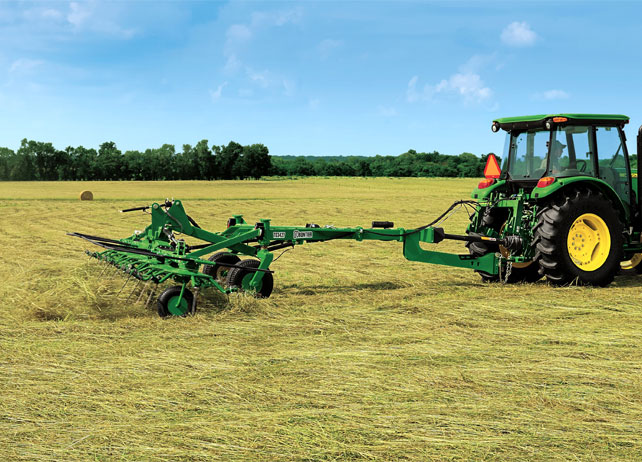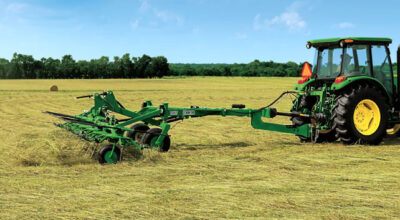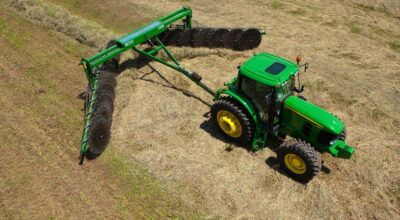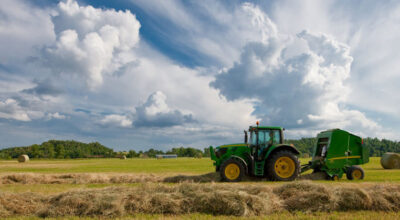What is a Hay Tedder?
A hay tedder is used to spread and fluff hay in a uniform swath after a windrower, mower-conditioner, rake, or some other type of equipment has created a windrow. Speedy dydown are equivalent to high-quality hay. Hay Tedders allow equal distribution for all different types of conditions, largely thanks to flotation tires that help with smooth operation over irregular land. Tine height adjustments also allow operators to match their implements to crop conditions. If wheel rakes are used to collect hay into windrows, hay tedders exist purely to undo that work.
What is a Hay Tedder Used For?
A hay tedder is used to spread the hay out so it can dry more quickly. The hay tedding process allows producers to reduce the dry down time and is especially useful for those that live in wet or humid areas, as it allows them to complete the hay baling process faster.

How Does a Hay Tedder Work?
When the hay tedder is in use, it feeds the crop into pairs of spinning rotor teeth. Operators should angle the rotors at an upward angle to lift the crop off the ground and float it to the surface.
So, now that we know a little more about hay tedders and the hay tedding process, what factors should be considered before making a purchase?
Acreage
Selecting the right hay tedder for your operation should start with considering the size of the land being worked on. Customers that have a small area of land to work on might want to consider a TD1010E Hay Tedder, while those working across much larger areas may want to think about a model like the TD3427 Hay Tedder. The size of your operation should dictate the tedder working width that’s needed to get the job done.
Terrain
Depending on the terrain, some hay tedders are a better fit than others. If you’re working on a flat piece of land, a TD1010E can get the job done effectively. However, if the land features irregular ground contours, you may want to consider a model like the TD1316, which has an articulated frame that’s supported by flotation tires to follow the contours with ease. You will also want to consider the transport width of the hay tedder if you will be moving the equipment from field to field.
With its quick hitch capabilities, as well as its in-cab transport controls, these hay tedders help to streamline your processes. In addition to its quick hitch abilities, the disc mowers have a park stand, as well as a latch convenience system, a shear hub assembly serviceability, and easy-to-operate transport lock systems. Newer tedders include in-cab controls, used to adjust tine pitch height, which allows for simple adjustments in varied terrains and conditions.
Conditions
Lastly, those looking to purchase a hay tedder should consider the conditions that they commonly work in. If you work in a variety of unpredictable conditions, you may want to think about purchasing a model like the TD1316, which is best-suited for those operators that need to take on various conditions from day to day.
Final Thoughts
Visit this page or contact your local John Deere dealer for additional answers to questions about hay tedders or other haymaking equipment.
If you enjoyed this post or want to read others, feel free to connect with us on Facebook, Pinterest, Twitter, or Instagram!



